Article
SensusQ analysis on the ZALA Lancet
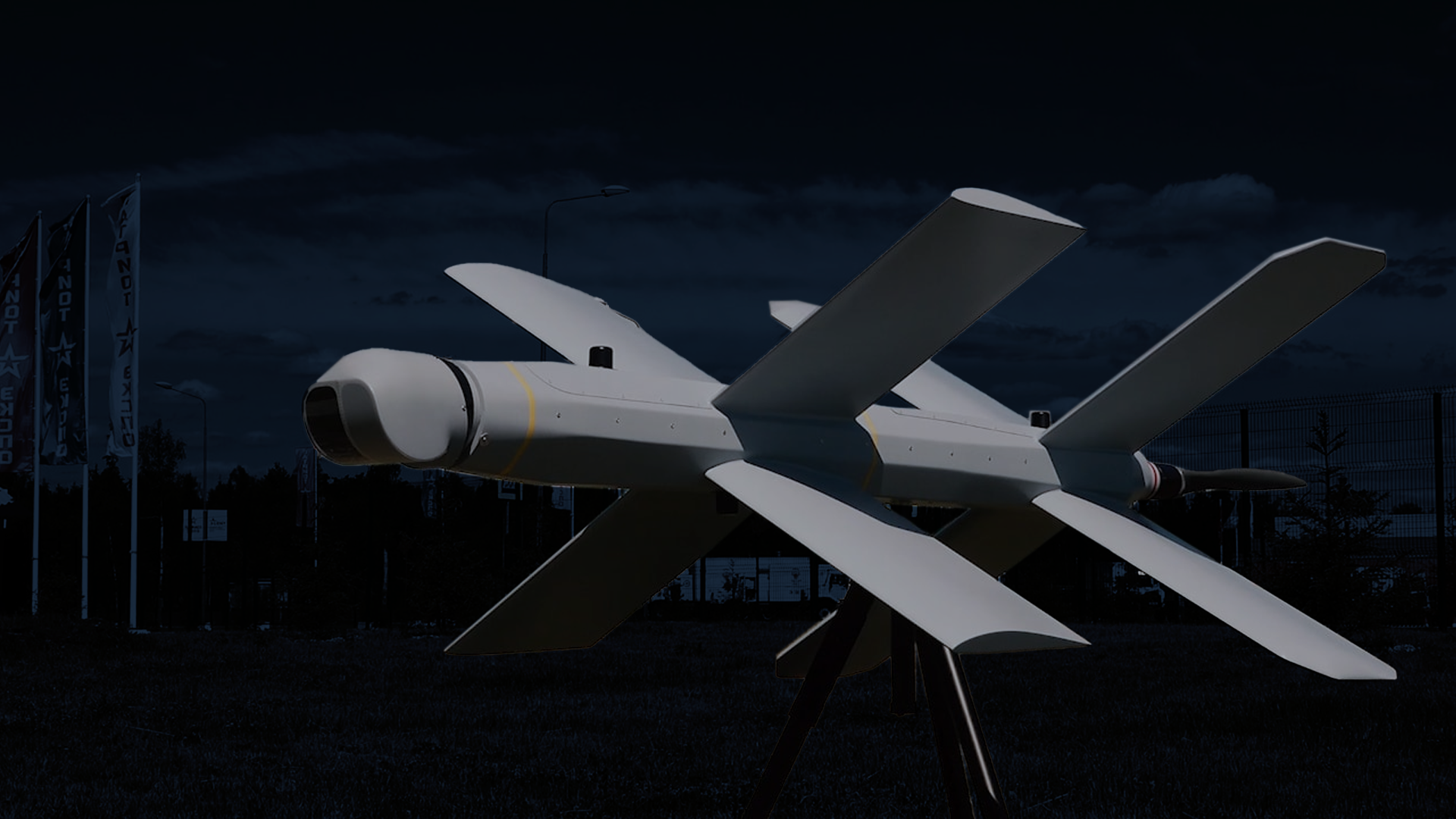
ZALA Lancets have conducted several successful precision strikes on various Ukrainian military targets, mostly in October and November last year.ZALA Lancets seems to be one of the most effective precise munitions in Russia’s arsenal at present.Due to their limited production ZALA Lancets will remain rather a propaganda tool than a strategic game changer in Russia's offensive campaign in Ukraine.
Keywords: Unmanned Aircraft Systems (UAS), Unmanned Aerial Vehicle (UAV), Loitering Munition (LM) Intelligence, Surveillance, and Reconnaissance (ISR), Open Sources Intelligence (OSINT), Ukraine, Russia, Conflict
Download the full article PDF:
Abstract
The ZALA Lancet was first unveiled in June 2019 and has been frequently used in Ukraine during October and November last year. It is characterized by two sets of X-shaped wings and comes in three variants which have multiple configurations and can perform attack missions in addition to reconnaissance tasks. During the Russian invasion of Ukraine, over 100 ZALA Lancets attacks have been documented as well as several target misses and interceptions of the attacking LM. This has generated an abundance of Open Source (OS) information, which combined with previous reports from the UAVs initial development and testing, provides insight into the development of the ZALA Lancet family and its performance on the battlefield.
While the design approach is novel in Russian military industry and offers several advantages, it is unlikely that the ZALA Lancet performance lives up to paper specifications. It is also unlikely that the manufacturing capabilities meet the needs of the front line. Russian approach of constructing military UAVs from imported components continues to be a necessity for Russia to avoid trade restrictions, and while it has reduced production costs it also has reduced the number of deliverable units. The ZALA Lancet is currently the most widely used Russian manufactured LM in the Russian Armed Forces and one of the most effective precise munitions in their arsenal.
In previous articles, we have covered Orlan-10 and so-called Orlan-20 reconnaissance UAVs as well as the Lastochka attack UAV. In this article we take an in-depth look at the ZALA Aero Group's Lancet (Russian: Ланцет) family loitering munitions (LM) analysis, which offers insight into the development of Russian military technology.
The ZALA Lancet was first unveiled in June 2019 and has been frequently used in Ukraine during October and November last year. It is characterized by two sets of X-shaped wings and comes in three variants which have multiple configurations and can perform attack missions in addition to reconnaissance tasks. During the Russian invasion of Ukraine, over 100 ZALA Lancets attacks have been documented as well as several target misses and interceptions of the attacking LM. This has generated an abundance of Open Source (OS) information, which combined with previous reports from the UAVs initial development and testing, provides insight into the development of the ZALA Lancet family and its performance on the battlefield.
While the design approach is novel in Russian military industry and offers several advantages, it is unlikely that the ZALA Lancet performance lives up to paper specifications. It is also unlikely that the manufacturing capabilities meet the needs of the front line. Russian approach of constructing military UAVs from imported components continues to be a necessity for Russia to avoid trade restrictions, and while it has reduced production costs it also has reduced the number of deliverable units. The ZALA Lancet is currently the most widely used Russian manufactured LM in the Russian Armed Forces and one of the most effective precise munitions in their arsenal.
Background
The ZALA Lancet (ZALA Ланцет (scalpel)) is a loitering munition (LM) developed for the Russian Armed Forces by ZALA Aero Group which is a part of the Kalashnikov Concern. [1] It was first unveiled in June 2019 at the ARMY-2019 military expo in Moscow. [2] [3] [4] [Figure 1] It is a further development of the ZALA KUB LM, based on a different aerodynamic scheme and significantly different tactical and technical characteristics. [5] [6] It is characterized by two sets of X-shaped wings that can be folded and packed into a carrier trunk. [5]
An LM (also known as a suicide drone or kamikaze drone) is an aerial weapon system category in which the munition loiters (waits passively) around the target area for some time and attacks only once the target is located.
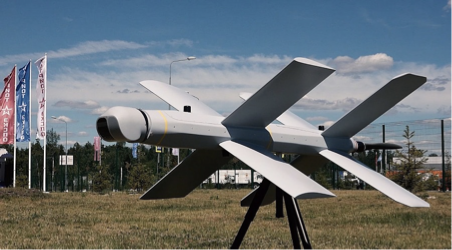
LMs fit in the niche between cruise missiles and unmanned combat aerial vehicles (UCAVs), sharing characteristics with both types. They differ from cruise missiles in that they are designed to loiter for a relatively long time around the target area, and from UCAVs in that a LM is intended to be expended in an attack and has a built-in warhead.
Loitering weapons first emerged in the 1980s for use in the Suppression of Enemy Air Defences (SEAD) role against surface-to-air missiles (SAMs), and were deployed for the SEAD role in a number of military forces in the 1990s. Starting in the 2000s, loitering weapons have been developed for additional roles ranging from relatively long-range strikes and fire support down to tactical, very short range battlefield systems that fit in a backpack. [7]
LM Description
General description
As an LM, the ZALA Lancet is primarily designed for strike missions, but it can also perform reconnaissance tasks before hitting a target. It has a maximum range of 40 kilometres (25 mi) and a maximum take-off weight (MTOW) of up to 12 kilograms (26 lb). [3] [8]
Its general shape is a missile with optics set mounted in the nose section. There are two sets of "X-shaped" wings, one in the centre of the body and the other one at the rear end to provide the necessary control in the air. [1] The wingspan of the Lancet-3 is 1.65 meters, the Lancet-1 is smaller. The UAV is made of plastic and carbon fibre. [9] At the extreme rear of the fuselage is a two-bladed pusher propeller, leaving the nose area of the optics set unobstructed. ZALA Lancet is powered by an electric (battery-driven) propulsion system. [10] Electric motors on LMs do not have a heat trace, they are less noisy, more reliable, lighter, and more compact compared with other engines. [1]
ZALA Lancet can engage targets using a coordinate system, an electro-optical system, and a combined system. [2] It can be pre-programmed before the flight. According to Kalashnikov’s Director General Vladimir Dmitriyev, the Lancet is guided by a ground control station that allows an operator to control the munition even on the terminal stage of flight. [3] Also, ZALA Lancet can transmit video, which allows to confirm successful target engagement. The detonator of the warhead has a proximity fuse. [2] It can be armed either with high explosive (HE) or HE-fragmentation warheads. [3]
Lancet’s targeting modules are interchangeable and can be changed according to the task. The available sensors are cameras in the infrared and visible range, laser pointer, target search sensor with a gas analyser and a radiometer. [5] [Figure 2] Although there is no clear data whether all these modules are operational or if some of them are still under development.
ZALA Lancet can be launched via catapult launcher from ground or sea platforms like the Raptor-class patrol boats. [10] Lancet is launched from the same catapult as Zala's first LM – KUB. [1]
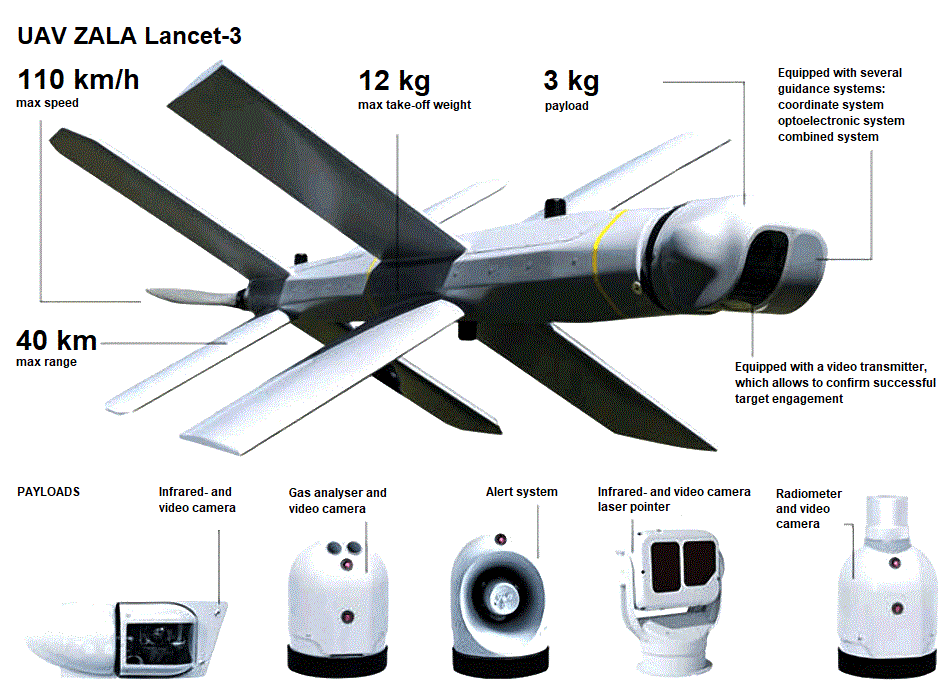
Variants
Lancet-3 / Изделие-51
The basic larger version with a 40-minute flight endurance. It allows the maximum payload of three kilograms (6.6 lb) and a 12 kg (26 lb) MTOW. The maximum speed is 80–110 km/h. [3] [11] [12]
Lancet-1
The smaller version of the Lancet-3, which has the same speed as Lancet-3 but carries a one-kilogram (2.2 lb) payload and has a 5 kg (11 lb) MTOW. This drone has the flight endurance of 30 minutes and can travel up to 40 km. [3] [9]
Lancet-3M / Upgraded Lancet-3 / Izdeliye 52 / Изделие-52
Russian troops in Ukraine have begun using the upgraded Lancet LMs with an increased flight duration of one hour and a more powerful warhead weighing around 5 kg. The Lancets attacking personnel use a high explosive fragmentation or thermobaric warhead while the ones attacking armoured vehicles make use of a high-explosive anti-tank (HEAT) warhead. [13] The upgraded variant of the Lancet-3 is called the Izdeliye 52 and the original version with a three-kilogram warhead is named Izdeliye 51. [12] [14] The upgraded Lancet-3 features one large X-shaped wing and a smaller X-shaped tail section, [FIGURE 3] while the previous model includes two symmetrical X-shaped wings. [15] [16]
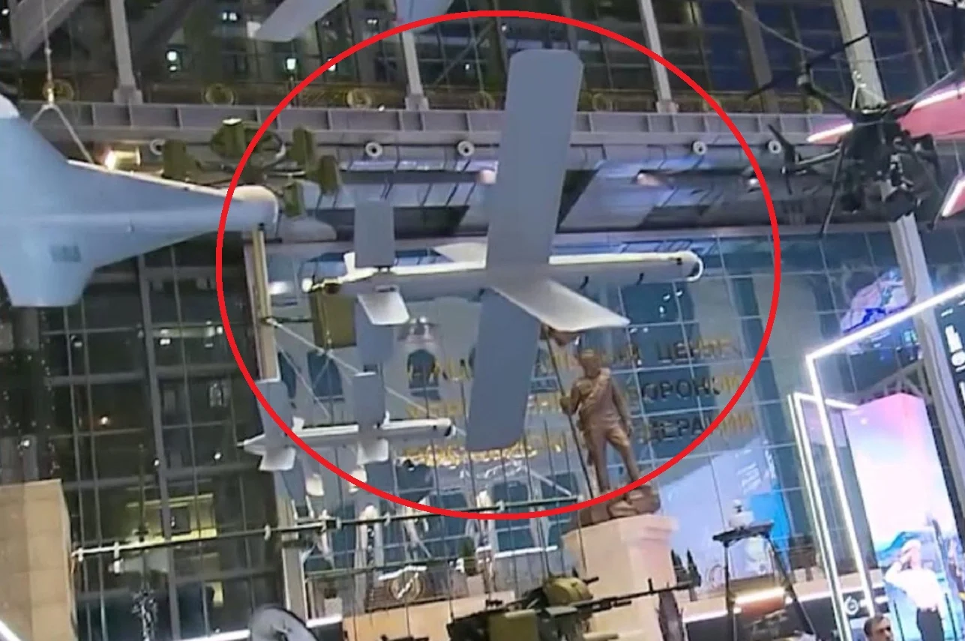
Specifications
X-shaped wings
Instead of the classic aviation wing scheme seen on other UAVs, the ZALA Lancet features two sets of "X-shaped" wings, one in the centre of the body and the other one at the rear. The classic scheme has a clear drawback - the UAV manoeuvres well along one axis and is rather immobile along the other. This is reflected in the ability to attack a moving target. According to Alexander Zakharov, CEO of ZALA AERO, the X-shaped aerodynamic design, inspired by the characteristic of rockets, is free from this drawback and performs better during diving and manoeuvring. The novelty from ZALA was named "Lancet" not merely because of the external design, but also because of the high accuracy. It is stated that “the drone can strike with surgical precision”. Additional advantages of the "X-shaped" wings are the reduced dimensions of the product. [1]
CEO of ZALA Aero Alexander Zakharov has stated that the double X is unique and entirely based on their know-how [1], while the Israeli company Uvision has used the same design since 2011. [17] [Figure 4]
The developers also claim that due to the high manoeuvrability of the new UAVs in flight, they can even imitate the behaviour of birds, confusing the enemy. This feature is supposed to complicate the search and identification of ZALA Lancet, as well as its subsequent destruction. [6] In fact, due to its X-shaped design, the Lancet requires a much higher speed than most birds to fly in order to generate enough aerodynamic force to stay airborne. While the fastest bird species, such as diving falcons, can fly even faster than Lancets and some of the fastest can match it, like the eider duck with the speed of about 75 km/h [18], the average cruising speed of most birds remains under 50 km/h. The ZALA Lancet, which is said to fly at the speeds of 80 km/h and above, is therefore unlikely to be mistaken for a bird.
The X-shaped wing design also reduces aerodynamic force by the aircraft, resulting in a lighter payload capacity than other UAVs with traditional wing designs. This is a limitation for the warhead weight, reducing the ability to destroy the target.
Artificial Intelligence (AI)
According to some sources, the Lancet's design also features autonomous flight operations making use of the on-board AI. The Artificial Intelligence Visual Identification (AIVI) system integrated into ZALA drones is supposed to use modular cameras for detecting and identifying military objects by class and type in real time. The ZALA's AI technology increases the area covered during a single flight by 60 times and improves the drone’s real-time lethality and autonomy. The collected data is also transferred to the operator on the ground. [19] It is unlikely that AIVI data is being processed on the UAV, because real-time object identification by class and type requires enormous processing power and advanced video processors, which would significantly increase the power consumption of the UAV. It is unlikely that the Lancet's feature such capability, as it would also surge the price of the aircraft. However, if the data is processed at the ground control station, the on-board AI capability is no longer a feature of the ZALA Lancet, as different Russian aircrafts could benefit from it.
The AIVI press release published in Russian does not reference to military applications. Instead, it describes a ZALA Aero machine-learning AI drone product line to be marketed for industrial and agricultural sectors. Incorporating modern machine-learning AI into military applications is significantly more difficult than in industrial or agricultural applications since modern machine-learning AI performance demands a vast amount of training data during development. Moreover, that training data needs to resemble operational conditions closely. In general, this training data is more easily obtained from commercial customers than from enemy militaries, especially if friendly weapons systems and sensors do not often come close within the range of the ones used by enemies. Getting enough of the right sort of training data is not impossible per se but is highly unlikely in practice. [20]
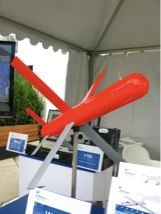
Air mining concept
The developers of the Lancet UAV offer an innovative concept of "air mining" that protects against enemy UAVs, which is different from the concept of air swarming. [21] According to the chief designer of Zala Aero, Alexander Zakharov, the Lancet can be used as an innovative air defence system to destroy larger and more expensive enemy UAVs. When an enemy drone is detected, the Lancet can accelerate to 300 km/h for a short period of time to overtake and destroy it. [10] Some sources describe the tactics of hunting for large attack UAVs of the enemy with the help of a group of Lancets, which meet an enemy attack UAV in an area. The problem of these munitions is a short flight duration, but this can be overcome with the advent of more efficient means of power supply. [22] [23]
The concept of air mining is declared to be a special feature of the ZALA Lancet and relies on three important LM advantages. Firstly, LM saves time because it is already deployed in the air, ready and waiting to strike the enemy. Secondly, ZALA Lancet is compact, light, and made of plastic and composite materials, therefore remaining "invisible" to traditional air defence radars which allows it to loiter relatively safely. Additionally, it is much cheaper to strike a target with a kamikaze drone than it is to destroy it with a high-precision projectile, which requires a self-propelled gun with a crew and a gunner. [24]
The air mining concept is not known to have been implemented in practice so far. Even the Russian sources have stated that on the animated video of the Kalashnikov Company, all this looks extremely impressive, but they also add: "However, the theory must be confirmed by practice. Only after comprehensive tests of the "air minefield" have taken place will it be possible to say if this beautiful idea is workable.” [22]

Production
250 ZALA Lancets were produced by July 2022 according to the Military Factory. [10] According to a Russian source, their troops could use up to 1,500 Lancet-3 drones in Ukraine. [25] This number is most likely highly exaggerated. Other Russian sources have said on November 15 that several hundred ZALA corporation drones have been used in Ukraine. [26] [27] This number seems more reasonable, since, according to the Oryxspioenkop, 90 hits and misses by ZALA Lancet UAV have been documented in Ukraine on February 11th. [28] Since Oryxspioenkop includes only proven hits and misses, the actual number of these instances surely is higher.
At the end of August 2022, Alexander Zakharov, the chief designer of ZALA Aero, complained about the lack of production capacity and proposed to occupy shopping centres for the construction of drones. [29] Meanwhile, Rosteh, the manufacturer of the UAVs, stated in October that they had the sufficient production capacity for manufacturing as many Lancets as needed, but were still waiting for orders from the military. [30]
Videos with the successful use of Lancets on the battlefield in Ukraine began to appear on the telegram channels of Russian military bloggers and journalists in late October and early November. The Russian Ministry of Defence also mentions the "successful use" of this device calls it the most effective Russian UAV in their reports. [8] On November 23rd, during the missile attack on the energy infrastructure of Ukraine, the Russian Federation used Lancet missiles, despite commonly using them for attacking military technique. [31] As of January and February 2023, the Lancet strikes have decreased steeply. This indicates that Russian stocks of the LMs were running low and suggests that their manufacturing capabilities might have been hampered by the import restrictions.
The director of the Centre for Analysis of Strategies and Technologies Ruslan Pukhov said already in April 2021 that “The deployment of serial production of the Lancet UAV seems to me personally far from a trivial task. We are talented in the development of some prototypes, but mass production since Soviet times has always caused problems for us. We can iron a flea, but we can’t put flea’s shoes on the conveyor.” Among other things, Ruslan Pukhov believes, with a high degree of probability, that the Lancet features imported components, which eventually will be a bottleneck when deploying mass production. “When manufacturing an initial batch of UAVs, foreign parts can still be purchased in some roundabout or semi-legal ways. But when these UAVs must be produced in hundreds and thousands, there probably emerge big problems.” [32] The Ukrainian drone development specialist Yuri Kasyanov has also said that 80% of Lancets' components are Chinese. [8]
To sum it up, the sanctions have likely prevented Russia from manufacturing Lancet UAVs in large numbers, and Russia has run out of stock of previously produced ZALA Lancets, just as it has depleted stock of various cruise missiles such as the Iskander.
Deployment of the ZALA Lancet
ZALA Lancet usage tactics
The Military Factory database attributes the following roles to the ZALA Lancet: [10]
Ground Attack (Bombing, Strafing): Ability to conduct aerial bombing of ground targets by way of (but not limited to) guns, bombs, missiles, rockets, and the like.Close-Air Support (CAS): Developed to operate in close proximity to active ground elements by way of a broad array of air-to-ground ordnance and munitions options.Intelligence-Surveillance-Reconnaissance (ISR), Scout: Surveil ground targets / target areas to assess environmental threat levels, enemy strength, or enemy movement.Special Forces: Serving Special Forces / Special Operations elements and missions.Unmanned Capability: Aircraft inherently designed (or later developed) with an unmanned capability to cover a variety of over-battlefield roles.
It is questionable how the ZALA Lancet can “conduct aerial bombing of ground targets by way of guns” or why it serves Special Forces but not infantry or marines. However, the list of these roles describes some of the tactical uses of the ZALA Lancet.
According to Russian military expert Leonkov, the main feature of the Lancet-3 UAV is its ability to manoeuvre, which ensures “surgical precision” of strikes, justifying the drone being named after a sharp surgical instrument. The manoeuvrability of the "Lancet" is due to the "double X" aerodynamic design, rare for a drone, which most modern kamikaze drones do not have. This allows the drone to dive at very high speeds. [9]
The ZALA Lancet has different flight profiles. They can fly up to the target at a low altitude following the terrain. [8] They can also attack from an altitude of 4.5 kilometres, accelerating up to 300 km/h. [8] [22] However, to fly at low altitudes, the ZALA Lancet will probably need the support of a repeater from another drone, such as the Orlan-10 [Figure 6], to communicate with the ground control station.

The ZALA Lancet achieves its maximum efficiency when used in tandem with a reconnaissance UAV, like ZALA 421-16E or Orlan-10, [8] [28] which flies at a high altitude and detects enemy targets. Then, it transmits its coordinates to the operators of the kamikaze drone and carries out the battle damage assessment. This suggests that Lancet will not be launched until a target is identified, reducing the risk of it being wasted. [15] A Russian military expert Aleksei Leonkov also admitted that Lancet is designed to destroy targets whose location is already known. [9] However, this adds delay and may reduce the element of surprise. [15]
While the Lancet is claimed to be able to hit moving and even evading targets, in most documented instances the targets have appeared to be stationary. This may reflect a sensor-to-shooter delay in the command chain: it takes too long to get a Lancet in the air and to a target. [15]
Operational history
ZALA Lancet has been combat tested in Syria during the Russian military intervention in the Syrian civil war since at least April 2020, when Rossiya 1 released unique footage of the Lancet destroying terrorist targets in the Idlib area. In the first video, the Lancet-3 takes off carrying 3 kg of explosives, before hitting a pickup with terrorists controlled by Hayat Tahrir al-Sham, formerly known as the al-Nusra Front. In the second video, the drone destroys the terrorist group's machine gun emplacement. [11] [24]
On 8 June 2022, Russian defence corporation Rosteh announced that Lancet and KUB drones were deployed during the 2022 Russian invasion of Ukraine. [40] [41] A month later, the first video of their combat use in Ukraine emerged. [5] In the middle of July, the first photo of a wrecked Russian kamikaze drone was released on social media. [33] [Figure 7]
In late 2022, multiple videos appeared on social networks showing Lancet drones striking a variety of Ukrainian military targets, such as air defence systems, self-propelled howitzers, tanks and military trucks. Among the targets damaged or destroyed were S-300 missile systems [34], Buk-M1 missile systems [35], Western-supplied M777 [25] and FH70 [36] howitzers, as well as M109 [37], AHS Krab [38], and CAESAR [39] self-propelled howitzers. [40] [42] [43] [44] [45] On the 4th of November, a Gyurza-M-class gunboat of the Ukrainian Navy was damaged by a Lancet drone - the first time a Lancet attacked a naval target during the war. [42] [43] [46]
Oleg Katkov, a military expert and editor-in-chief of Defense Express believes that the Russians have also used the Lancets in Ukraine for propaganda. They have collected many videos over a long period and then massively released them on the network. However, many of the videos they have posted show the destruction of dummies of military equipment. By continuing the publishing of strikes with Lancets, the Russians are trying to pretend that they are using them en masse. [31]
If Russia is using the ZALA Lancet strikes for propaganda, they have likely tried to record and publish nearly all their attacks, as propaganda has often been of more importance to the Russian leadership than the actual tactical success. If this is true, the published content and Oryxspioenkop's data suggest that Russia has not used more than a hundred ZALA Lancets in Ukraine. [28]
Failures and limitations
While the ZALA Lancet is clearly an effective weapon, the videos have also revealed its limitations and target misses. [15] As for countering these UAVs, Rosteh confidently states it to be unrealistic thanks to built-in anti-laser protection which helps to avoid even the latest anti-drone laser weapons. [1] [8] The Ukrainian armed forces however have a different opinion. The first instance of a Lancet LM was shot down and captured on photos by Ukrainian forces in mid-July in Zaporozhe. [47] [Figure 7] Another Russian kamikaze drone was shot down a week later in the Nikolaev region while trying to attack a radar station. In October, the Ukrainian Air Force reported that their fighter had intercepted two Lancets. [8] Ukrainians have claimed to have brought down Lancets with just small arms fire. [48] The effectiveness of the Lancets anti-laser protection therefore remains unclear since Ukrainian soldiers have effectively destroyed them with various robust kinetic weapons and even machine guns.
While long-range Iranian Shahed kamikaze drones are used against Ukrainian energy infrastructure, the Lancet is employed as a precision battlefield weapon against high-value military targets, usually located by a reconnaissance drone before it gets launched. Although the Lancet is recorded having hit several Ukrainian targets, there are also numerous misses. [49] The misses may have been initially caused by a loss of communication and loss of control over the LM in the final stages of the attack due to low altitude. Some of the misses may have also been caused due to the low quality of the gimbal and the lack of a proper "video lock" function of the video processor.

The light warhead of the LMs (1 kg for the Lancet-1, 3-5 kg for the Lancet-3(M)) does not always guarantee the actual destruction of the target, even after a direct hit. [28] As a way of showing just how little a hit can mean, Ukrainians produced a video showing the damage after the Russians had posted images of a Lancet strike on a howitzer. The hit seemed to have only damaged one wheel of the howitzer. [49] [50]
On January 22nd, a modernized Lancet kamikaze drone failed to neutralize a Ukrainian AHS Krab self-propelled howitzer, which was protected by a conventional net. The photos show the warhead of the Lancet kamikaze drone had gone off, but the self-propelled howitzer had remained in service. [51] [Figure 8]
In several videos, soldiers on the ground have scattered seconds before the Lancet strikes. [52] This suggests that regardless of its ability to fly silently and stealthily at high altitudes, the diving ZALA Lancet is highly audible and/or visible, meaning that the alert troops can get out of the way.
In one of the more embarrassing incidents, a Lancet strike, which was claimed to show the weapon destroying a Ukrainian Buk-M1 surface-to-air missile launcher, included a target that looked like a wooden dummy instead. [53]

Conclusion
Lancet-1 and Lancet-3 are relatively new LMs developed by Russia, which have caused considerable destruction to Ukrainian military equipment, especially in the last quarter of last year. While the Lancet-3 is certainly not a ‘one shot, one kill’ weapon, it seems to be one of the most effective munitions in Russia’s arsenal at present, striking high-value targets with remarkable precision at long ranges. There is no immediate way of stopping it - the self-propelled anti-aircraft artillery like the Gepard twin 30mm autocannon supplied by German have proven effective, but only if they happen to be in the right place at the right time, and there are not enough of them to cover the whole front line. [49]
Fortunately, sanctions seem to have prevented mass production of the ZALA Lancets in Russia, and Russia has run out previously produced LMs, suggested by a drastic drop in Lancet strikes in January and February of this year. Production is likely still taking place, but on a limited scale with the help of smuggled or semi-legally obtained foreign parts. As a result, the Russians fail to keep the ZALA Lancet attacks occurring as often as during October and November. The truth is that despite years of development and months of combat, Russia still does not have enough ZALA Lancets or other LMs to effectively conduct its operations in Ukraine.
The key characteristics of ZALA Lancets are generally at the same level as the Western counterparts', except for the flight endurance, which is 30 minutes for Lancet-1 and 40 minutes for Lancet-3. The only version matching the minimum standards of Western counterparts is Lancet-3M with a flight endurance of 60 minutes. The ZALA Lancet performs better on paper than it does in reality, which is often typical of Russian technology innovation. Therefore, we have not yet seen any documented proof of ZALA Lancet air mining concept, AIVI systems or anti-laser protection. ZALA Lancet’s numerous misses also raise the question of whether it can really strike its target with “surgical precision” or is it more like one of Viktor Chernomyrdin’s famous quotes: ”We wanted the best, but it turned out like always.” Additionally, the light warhead of ZALA Lancets does not always guarantee the actual destruction of the target, even if it is a direct hit.
The ZALA Lancets have surely conducted several successful precise strikes on different military targets in Ukraine and we will likely see them more. Anyhow, due the limited production capabilities and questionable general performance, the ZALA Lancets do not pose any strategic danger and they will not be a game changer in the Russian offensive campaign in Ukraine. Compared to the other Russian technologies, ZALA Lancet excels at precision and will therefore definitely be used in propaganda campaigns trying to depict Russian armed forces as a powerful and effective “second army in the world” to domestic auditory.
References
[1] Ударный беспилотник «Ланцет»: копье XXI века. Aug 2019. [Online] https://rostec.ru/news/udarnyy-bespilotnik-lantset-kope-xxi-veka/
[2] Kalashnikov presented precision UAV weapon system ZALA LANCET. Jun 2019. [Online] https://www.ruaviation.com/news/2019/6/25/13741/?h
[3] Army 2019: ZALA Aero unveils new loitering munitions. Jul 2019. [Online] https://www.armyrecognition.com/army-2019_news_russia_online_show_daily_media_partner/army_2019_zala_aero_unveils_new_loitering_munitions.html
[4] Kalashnikov presented precision UAV weapon system - ZALA LANCET. Jun 2019. [Online] https://en.kalashnikovgroup.ru/media/bespilotnye-letatelnye-apparaty/kalashnikov-predstavil-vysokotochnyy-udarnyy-bespilotnyy-kompleks-zala-lantset
[5] 1st Footage Of Russia’s Kamikaze ‘Suicide’ Drone Emerges; Loitering Lancets Bust Ukraine’s ‘Western Armory’. Jul 2022. [Online] https://eurasiantimes.com/1st-footage-of-russias-kamikaze-suicide-drone-emerges-loitering-lancets/
[6] Ланцет. Jul 2022. [Online] http://www.airwar.ru/enc/bpla/lancet.html
[7] Wikipedia: Loitering munition. [Online] https://en.wikipedia.org/wiki/Loitering_munition
[8] Смертельные "Ланцеты". Откуда в России появилось это опасное оружие и так ли оно эффективно. Nov 2022. https://www.bbc.com/russian/features-63689095
[9] "Ланцеты" против ЗРК: Почему дроны-камикадзе на Украине оказались эффективнее авиации. Nov 2022. [Online] https://life.ru/p/1537733
[10] ZALA Lancet. Jul 2022. [Online] https://www.militaryfactory.com/aircraft/detail.php?aircraft_id=2521
[11] Russian Lancet loitering munitions tested in Syria. Apr 2021. https://www.armyrecognition.com/defense_news_april_2021_global_security_army_industry/russian_lancet_loitering_munitions_tested_in_syria.html
[12] Раскрыто настоящие название дронов «Ланцет». Nov 2022. https://vpk.name/news/650362_raskryto_nastoyashie_nazvanie_dronov_lancet.html
[13] Российская армия начала применять на Украине барражирующие боеприпасы «Ланцет» с усиленной БЧ. Jul 2022. [Online] https://armstrade.org/includes/periodics/news/2022/0721/070568601/detail.shtml
[14] Российские войска отработали на Украине первую беспилотную разведывательно-ударную систему. Nov 2022. [Online] https://armstrade.org/includes/periodics/news/2022/1121/093070445/detail.shtml
[15] Военный обозреватель назвал особенности беспилотника «Ланцет». Oct 2022. [Online] https://iz.ru/1413513/2022-10-21/voennyi-obozrevatel-nazval-osobennosti-bespilotnika-lantcet
[16] A new version of the loitering ammunition "Lancet" began to be used during the NWO in Ukraine. Jul 2022. [Online] https://en.topwar.ru/199327-modernizirovannuju-versiju-barrazhirujuschego-boepripasa-lancet-nachali-primenjat-na-ukraine.html
[17] Missile or UAV? UVision Introduces the WASP. Jul 2011. [Online] https://defense-update.com/20110622_wasp_uvision.html
[18] How Fast and High Do Birds Fly? 1988. [Online] https://web.stanford.edu/group/stanfordbirds/text/essays/How_Fast.html#:~:text=Do%20Birds%20Fly%3F-,How%20Fast%20and%20High%20Do%20Birds%20Fly%3F,speed%20of%20about%2047%20mph.
[19] Russian forces in Ukraine use drone with Artificial Intelligence technology to detect high-value targets. Nov 2022. [Online] https://www.armyrecognition.com/defense_news_november_2022_global_security_army_industry/russian_forces_in_ukraine_use_drone_with_artificial_intelligence_technology_to_detect_high-value_targets.html
[20] Russia Probably Has Not Used AI-Enabled Weapons in Ukraine, but That Could Change. May 2022. [Online] https://www.csis.org/analysis/russia-probably-has-not-used-ai-enabled-weapons-ukraine-could-change
[21] В России научились создавать воздушные «минные поля». Apr 2021. [Online] https://www.techinsider.ru/weapon/news-691263-v-rossii-nauchilis-sozdavat-vozdushnye-minnye-polya/
[22] БАРРАЖИРУЮЩИЙ "ЛАНЦЕТ": Россия стремительно проходит путь от дронов-камикадзе к летающим минным полям. Jun 2021. [Online] https://www.aviaport.ru/digest/2021/06/25/679111.html
[23] НОВІТНІ ТЕХНОЛОГІЇ – ДЛЯ ЗАХИСТУ ПОВІТРЯНОГО ПРОСТОРУ. XVI МІЖНАРОДНА НАУКОВА КОНФЕРЕНЦІЯ ХАРКІВСЬКОГО НАЦІОНАЛЬНОГО УНІВЕРСИТЕТУ ПОВІТРЯНИХ СИЛ ІМЕНІ ІВАНА КОЖЕДУБА. Apr 2020. [Online] https://slyusar.kiev.ua/XVI_conf_hnups_2.pdf
[24] Successfully Carrying Out Mission In Syria, Kamikaze 'Flying Kalashnikov' Drone ZALA Lancet Ready To Undertake State Trials. Aug 2021. [Online] https://voi.id/en/news/79902/successfully-carrying-out-mission-in-syria-kamikaze-flying-kalashnikov-drone-zala-lancet-ready-to-undertake-state-trials
[25] Опубликовано видео удара "Ланцета" по американской гаубице М777. Nov 2022. [Online] https://life.ru/p/1536937
[26] ZALA: тренажер барражирующих боеприпасов «Изделие-52/51» может моделировать любые боевые миссии. Nov 2022. [Online] https://armstrade.org/includes/periodics/news/2022/1115/100070371/detail.shtml
[27] Источник: Россия отработала беспилотную разведывательно-ударную систему. Nov 2022. [Online] https://www.warandpeace.ru/ru/news/view/171847/
[28] Hit Or Miss: The Russian Loitering Munition Kill List. Nov 2022. [Online] https://www.oryxspioenkop.com/2022/11/hit-or-miss-russian-loitering-munition.html
[29] Главный конструктор Zala Aero предложил переоборудовать ТЦ под производство беспилотников. Aug 2022. [Online] https://www.vedomosti.ru/politics/news/2022/08/24/937442-pereoborudovat-pod-proizvodstvo-bespilotnikov
[30] В «Ростехе» пообещали поставить российским ВС необходимое число дронов-камикадзе «КУБ» и «Ланцет». Oct 2022. [Online] https://topwar.ru/203889-v-rostehe-poobeschali-postavit-rossijskim-vs-neobhodimoe-chislo-dronov-kamikadze-kub-i-lancet.html
[31] Зачем Россия накапливает ракеты для удара, если достаточно запасов: ответ эксперта. Nov 2022. [Online] https://24tv.ua/ru/rossija-nakaplivaet-rakety-dlja-udara-po-ukraine-zachem-ona-jeto-delaet-24-kanal_n2204677
[32] Российский «камикадзе»: станут ли беспилотники «Ланцет» массовым оружием. Apr 2021. [Online] https://www.gazeta.ru/army/2021/04/20/13566356.shtml
[33] Russians now use Lancet kamikaze drones in Ukraine. Jul 2022. [Online] https://mil.in.ua/en/news/russians-now-use-lancet-kamikaze-drones-in-ukraine/
[34] РИА Новости: Российский ударный БПЛА "Ланцет" уничтожил украинский комплекс ПВО С-300. Oct 2022. [Online] https://t.me/rian_ru/181919
[35] Военкор Ярем: Ланцет VS Бук. Nov 2022. [Online] https://t.me/yaremshooter/204
[36] Военный Осведомитель: БПЛА-камикадзе "Ланцет" уничтожает 155-мм гаубицу FH-70, осень 2022. Dec 2022. [Online] https://t.me/milinfolive/94787
[37] РИА Новости: Российские барражирующие боеприпасы «Ланцет» уничтожили американские САУ «Paladin»… Nov 2022. [Online] https://t.me/rian_ru/184426
[38] Военкор Ярем: Ланцет VS AHS Krab. Nov 2022. [Online] https://t.me/yaremshooter/208
[39] Artillerie : Pour la première fois, un CAESAr ukrainien a été détruit lors d’une action de combat. Nov 2022. https://www.opex360.com/2022/11/16/artillerie-pour-la-premiere-fois-un-caesar-ukrainien-a-ete-detruit-lors-dune-action-de-combat/
[40] Russian Videos Reveal New Details Of Its Loitering Munitions. Nov 2022. [Online] https://www.forbes.com/sites/davidhambling/2022/11/04/russian-videos-reveal-new-details-of-loitering-munitions/
[41] Kamikaze drones successfully used in Russia’s special operation in Ukraine — defense firm. Jun 2022. [Online] https://tass.com/defense/1462311
[42] Discover Russian Lancet suicide drones used to strike Ukrainian land and naval targets. Nov 2022. [Online] https://www.armyrecognition.com/ukraine_-_russia_conflict_war_2022/discover_russian_lancet_suicide_drones_used_to_strike_ukrainian_land_and_naval_targets.html
[43] Discover Lancet loitering munitions used by Russia to destroy Ukrainian land & naval equipment. Nov 2022. [Online] https://www.youtube.com/watch?v=_TZnclOTu8k
[44] Donetsk pro-Russians post video showing destruction of first CAESAR howitzer of Ukrainian army. Nov 2022. [Online] https://www.armyrecognition.com/ukraine_-_russia_conflict_war_2022/donetsk_pro-russians_post_video_showing_destruction_of_first_caesar_howitzer_of_ukrainian_army.html
[45] Ukraine Weapons Tracker: A Ukrainian CAESAR 155mm self-propelled howitzer was damaged by a Russian Lancet loitering munition in the vicinity of Maksymivka. Nov 2022. [Online] https://twitter.com/UAWeapons/status/1592844029452247040
[46] Russian loitering munition Lancet hits Ukrainian Gyurza M class gunboat for first time. Nov 2022. https://www.navyrecognition.com/index.php/naval-news/naval-news-archive/2022/november/12438-russian-loitering-munition-lancet-hits-ukrainian-gyurza-m-class-gunboat-for-first-time.html
[47] СтратКом ЗСУ / AFU StratCom: Запорізька область, збитий російський безпілотник Ланцет. Jul 2022. [Online] https://t.me/AFUStratCom/4273
[48] Бойцы 28 мехбригады "приземлили" российские БПЛА "Ланцет-3" и "Элерон-3". Aug 2022. [Online] https://focus.ua/voennye-novosti/525742-boycy-28-mehbrigady-prizemlili-rossiyskie-bpla-lancet-3-i-eleron-3-foto
[49] Russian Loitering Munition Racks Up Kills But Shows Limitations. Dec 2022. [Online] https://www.forbes.com/sites/davidhambling/2022/12/01/russian-loitering-munition-racks-up-kills-but-shows-limitations/?sh=29fc13755d58
[50] Special Kherson Cat: A Russian modern kamikaze drone strikes a Ukrainian howitzer. Nov 2022. [Online] https://twitter.com/bayraktar_1love/status/1597514410288816129
[51] The net saved the AHS Krab self-propelled howitzer from the Lancet kamikaze drone. Jan 2023. https://mil.in.ua/en/news/the-net-saved-the-ahs-krab-self-propelled-howitzer-from-the-lancet-kamikaze-drone/
[52] Рыбарь: Удар БЛА-камикадзе «Ланцет» по цели к югу от Николаева. Oct 2022. [Online] https://t.me/rybar/40462
[53] Ukraine Weapons Tracker: Russian forces claimed to take out a Ukrainian Buk-M1 SAM TELAR using a ZALA Lancet loitering munition....but actually destroyed an obvious decoy. Oct 2022. [Online] https://twitter.com/UAWeapons/status/1580853706807193607